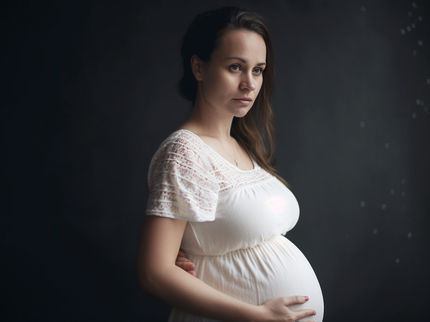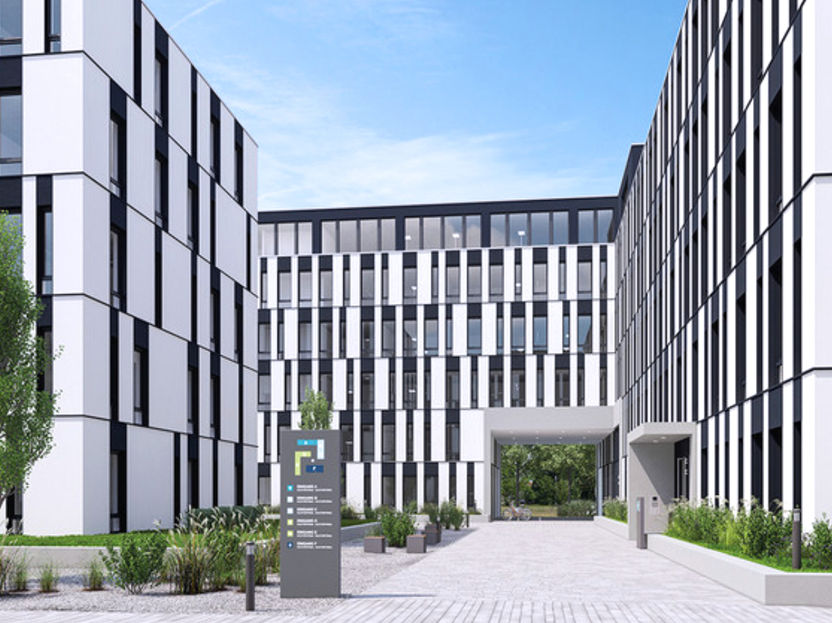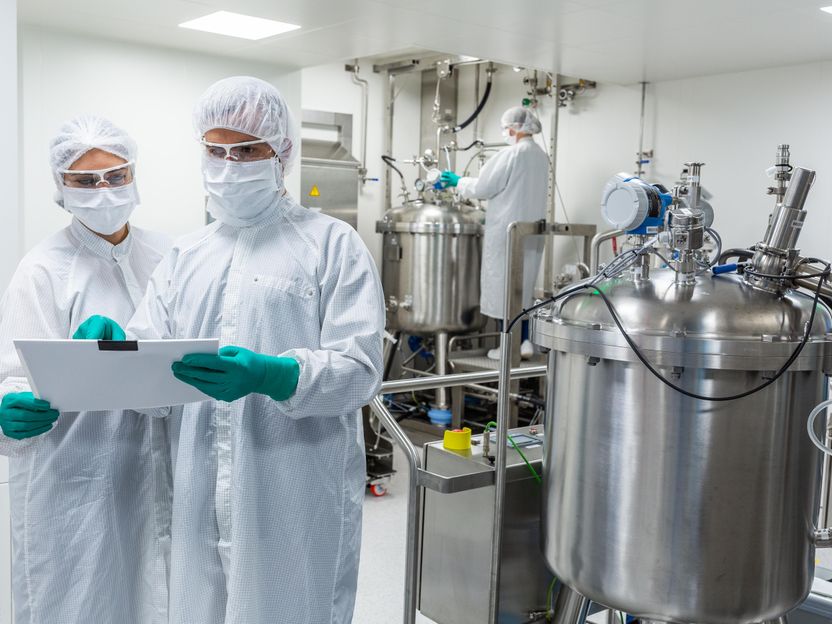Embryonic development in cell culture
Research group can for the first time reproduce early human heart development in a culture dish using human pluripotent stem cells
Advertisement
To study early stages in embryonic development in the cell culture dish, scientists use so-called human pluripotent stem cells (hPSC). These are cells with have remarkablespecial properties that can be multipliedas they can indefinitely multiply and are capable of forming any functional cell type of the body. With the help ofBy applying specific biological or chemical signals, the hPSCs can be directed, for example, be controlled in such a way that they exclusively form pureinto heart muscle cells, thereby. These can then specifically grow together to form a tissue - an important tool enablingfor the development of new therapies in regenerative therapies to the heartmedicine.
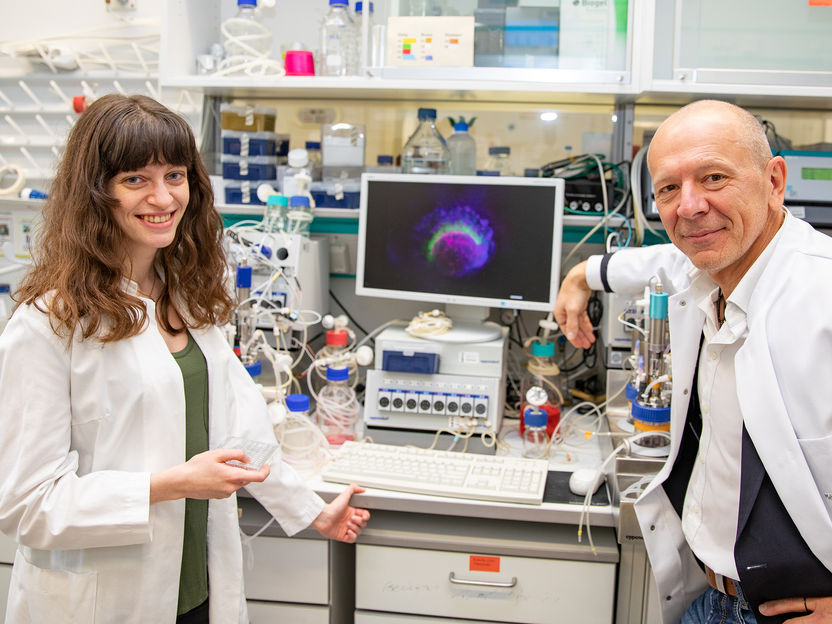
Dr. Lika Drakhlis and Dr. Robert Zweigerdt with bioreactors and a special cell culture dish that serves as a platform for growing the hPSC aggregates.
Copyright: Karin Kaiser / MHH
However, how the manythe sequential differentiation of multiple cell types arise step by step during heart development and form thecomplex organ structures through self-organisedation formation of complex tissues structures could not be reproduced induced in the cell culture yet dish until now. Now, for the first time, Aa research team led by Dr. Robert Zweigerdt, cell biologist at the Leibniz Research Laboratories for Biotechnology and Artificial Organs (LEBAO) at the Hannover Medical School (MHH), has now achieved this goal. The scientists, for the first time, succeeded in accurately reproducing the complete path to the early stages of a human heart development in ain cell culture dish.
Heart forming organoids (HFOs) also contain anlagen offor blood vessels, liver and lungs
"We culturedgrew the hPSCs into as three-dimensional cell aggregates in a hydrogel of proteins and observed the controlled development into so-called heart forming organoids, or HFOs" says Dr. Lika Drakhlis, PhD and first author of the study. TIn order for the cells to form an early heart stage at all, the scientists had to develop a new differentiation protocol. This special experimental instruction withstrategy to direct the exact specifications of the novel for growing the organoid models, which consist of at least seven different highly organized, clearly structured cell- and tissue- types, did not exist for the heart until then. By combining numerous microscopic and molecular methods, the scientists could reveal that HFOsthe scientists were then able to show that the cell clumps, which are up to two millimetres in size, develop in exactly the same way as isclosely recapitulate key steps known from native known from heart development in the embryo. "At this early stage of development, the organoids consists of three cup-shaped layers, and includinges the anlagen of the heart, the progenitors of for the liver and lungs and the blood vessels, all of which are known to mutually influence each other," explains the first author.the first author
New ways strategies for the ttreat reatment of heart defects and drug tests
THowever, these novel findings are not only of interest to the scientific community for elucidating healthyscientist studying organ development. Inherited heart mMalformations caused by by artificial or patients' own genetic defects can now also be studied in the cell culture dishinvestigated more properly by the HFO strategy. "This is important to better understand congenital heart diseases and then to be ablethus to develop more treat them betterappropriate treatments," explains Dr Zweigerdt. In addition, the organoids are suitable for testing pharmacological agents. "The effects efficacy as well asand potential side effects of new or further developedestablished drugs can also be studied more properly in this advanced new model. This in mind,; we have just started concrete studies on thisa set of new studies to further validate and apply the HFO strategy," emphasises the senior author Robert Zweigerdtstudy leader.
Original publication
Other news from the department science
Most read news
More news from our other portals
See the theme worlds for related content
Topic world Cell culture technology
Cell culture technology is a central pillar in biotechnological and pharmaceutical research and development. It enables the growth and maintenance of cells under controlled laboratory conditions, providing a window into the molecular and cellular processes of life.
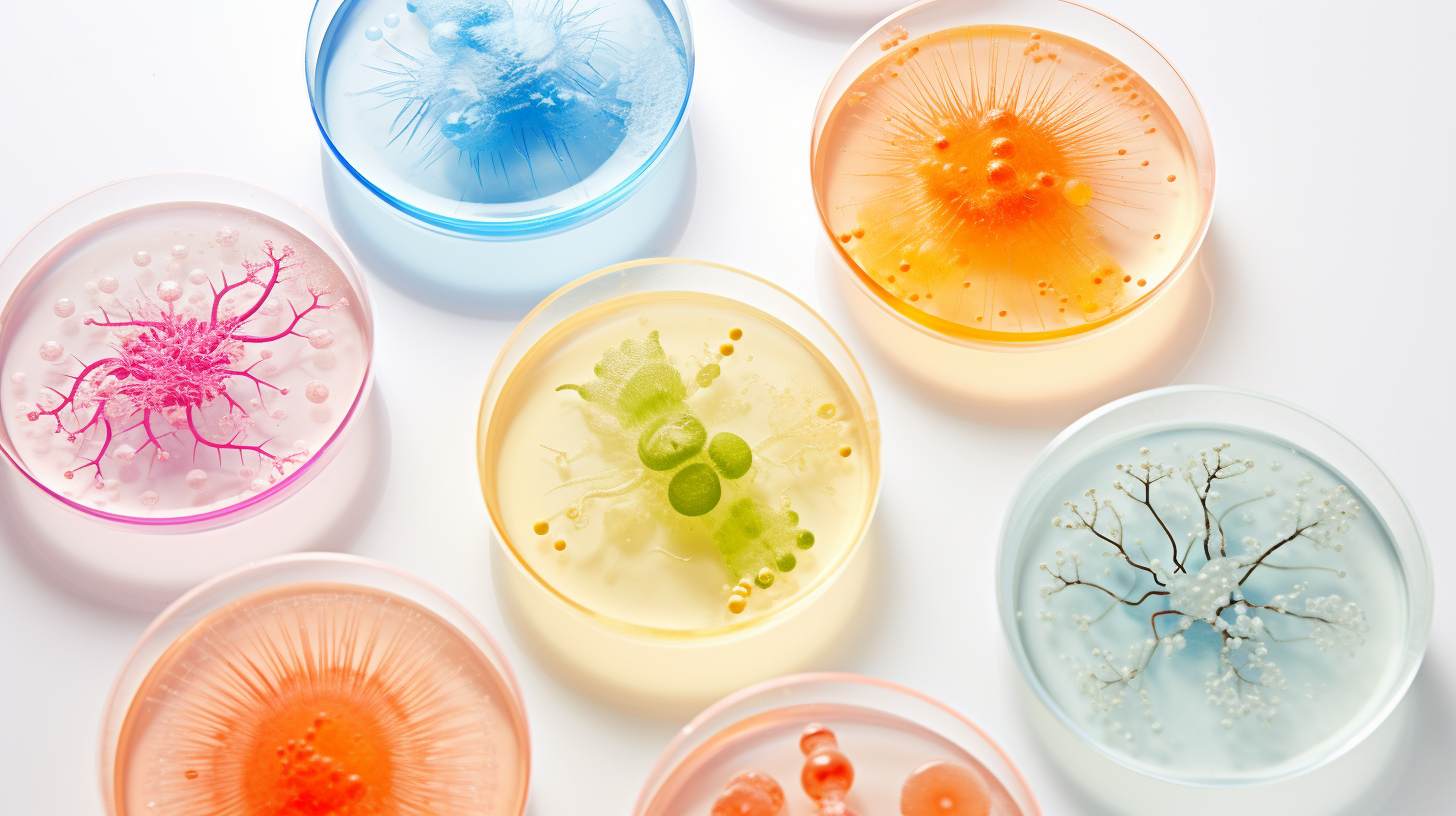
Topic world Cell culture technology
Cell culture technology is a central pillar in biotechnological and pharmaceutical research and development. It enables the growth and maintenance of cells under controlled laboratory conditions, providing a window into the molecular and cellular processes of life.



